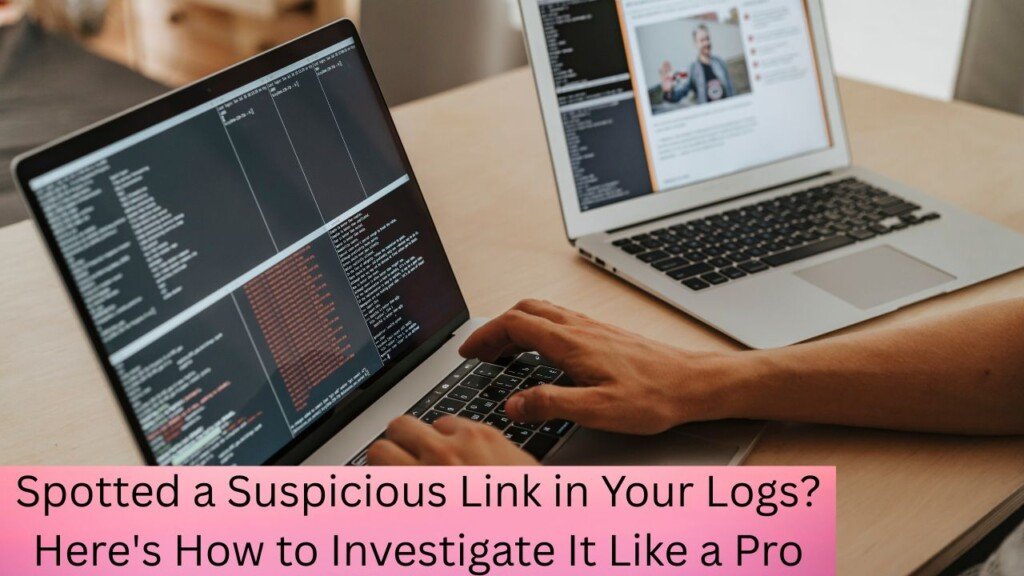Spotted a Suspicious Link in Your Logs? Here’s How to Investigate It Like a Pro
If you find a weird URL in your server logs, decode it, trace its IP address, check user agents, and assess intent. Use tools like URL to IP Lookup to spot bot activity, spam backlinks, or hacking attempts — then respond based on the threat level.
Why This Happens: Your Logs Tell a Bigger Story
Web logs are messy. But hidden inside them are signs of what’s crawling, probing, or spamming your site. That suspicious link isn’t random. It might be:
- A shady bot indexing your pages.
- A spammy backlink trying to ride your SEO.
- A hacker attempting to breach your site.
The trick? Don’t panic. Investigate. Categorize. Then act.

First Check: What Kind of Link Are We Dealing With?
Here’s what to examine before jumping to conclusions:
| Signal | What It Might Mean | What To Check |
| Weird Parameters (e.g., id=1′ OR ‘1’=’1) | SQL injection probe | Decode and scan for DB query attempts |
| ../ or long directory chains | Directory traversal | Trying to access sensitive server paths |
| Tons of hits in seconds | Bot scraping or brute force | User-Agent + IP log |
| Unknown domains linking in | SEO spam or toxic backlinks | Use backlink checkers |
Run the link through this URL to IP Tool to see where it’s coming from. You might be surprised.
What’s the Threat Level? A Triage Framework
Not every suspicious link deserves an all-out panic. Use this simple framework:
Level 1 – Low Threat: Nuisance Bots
Scrapers, uptime bots, or harmless crawlers. They show up in logs, but don’t harm much.
How to spot:
- Obvious User-Agent (e.g., BaiduBot, AhrefsBot)
- Requests don’t target sensitive pages
- Traffic is steady, not spiky
Fix: Rate-limit or block with robots.txt or server rules.
Level 2 – Medium Threat: Spam or SEO Junk
This is where random links show up in your logs, trying to push spam.
Examples:
- Fake referrers trying to bait you into visiting their sites
- Cloaked redirect links
- Links from shady guest post farms
Why it matters: These may hurt your domain reputation and SEO authority.
Fix:
- Add to disavow file (Google Search Console)
- Set up firewall rules for referrer spam
- Monitor for link velocity spikes
Level 3 – High Threat: Hacking Attempts
These are serious. SQL injections, XSS attacks, path traversal, or known botnets.
Clues:
- URLs like /login?user=admin&password=123456
- Payloads with <script>, ../etc/passwd, eval()
- IPs from flagged locations or IP blocks
- Frequent 404 hits on sensitive files (e.g., /wp-admin/)
Fix:
- Block IP immediately
- Run security scans
- Check for vulnerabilities and patch them
Decode the Link Like a Hacker (But With Good Intentions)
Understanding what the attacker is doing helps you stay ahead. Let’s decode a few examples:
| Suspicious Link | Attack Type | What’s Happening |
| /login.php?id=1′ OR ‘1’=’1 | SQL Injection | Attempt to bypass login |
| /../../../etc/passwd | Directory Traversal | Access restricted system files |
| /search?q=<script>alert(‘xss’)</script> | Cross-Site Scripting | Injecting JS into input fields |
Use this mindset: “What was this attacker trying to achieve?”
Always decode long or encoded URLs using tools like CyberChef or built-in browser tools.
Taking Action: Block, Report, Defend
When you’ve identified the threat, act quickly — especially for anything in Level 2 or 3.
Immediate Actions (High Threat)
- ✅ Block the IP at the server level (use .htaccess, firewall, or cloud security service)
- ✅ Run a full malware/security scan (Wordfence, Sucuri, etc.)
- ✅ Change credentials if any admin pages were targeted
Medium Threat? Use Proactive Measures
- 🛡️ Set up a Web Application Firewall (Cloudflare WAF, AWS WAF, etc.)
- 🚫 Add domains to your Google Disavow list
- 🧩 Use security plugins to add login limits, CAPTCHAs, etc.
Gathering Evidence for Your Team
Need to escalate the issue internally or to your hosting provider? Create a mini digital forensics file:
- Save the exact log line (include timestamp, IP, User-Agent, and URL).
- Lookup the IP using URL to IP tool.
- Document decoded URL details, including the type of attack.
- Summarize threat level and suggest next action.
This helps your developer or host react faster and gives them hard evidence to work with.
Your Ongoing Log Analysis Workflow
Let’s be honest — spotting one weird link usually means more are hiding. You need a system:
1. Review Logs Weekly
Don’t wait for a crisis. Look for patterns.
2. Automate Monitoring
Use log monitoring tools (e.g., Loggly, Datadog) to alert on suspicious activity.
3. Stay Informed
Subscribe to security feeds (CVE updates, Reddit’s /r/netsec) to learn what’s trending in attack vectors.
Don’t Just Investigate. Secure.
That weird link in your logs? It’s not just noise. It’s a breadcrumb from someone — or something — poking around your house. Whether it’s a bot, a spammer, or an actual attacker, your job is to:
- Identify the threat.
- Classify it fast.
- Act wisely.
Use tools like this free URL to IP Lookup to turn noise into clarity. It’ll give you the location, host, and threat fingerprint of any suspicious link you uncover.